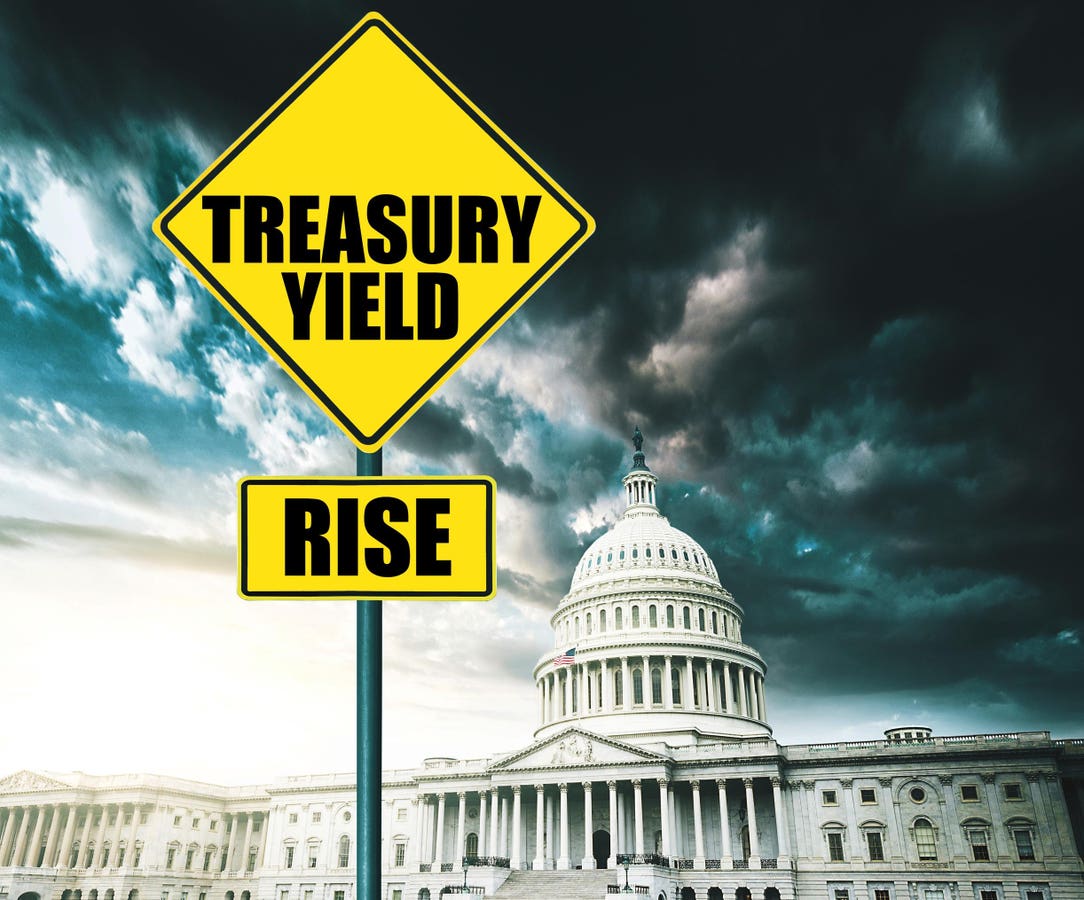Many participants in the financial markets don’t remember the bubble and bust of the early 2000s. Almost 25 years ago the Nasdaq index reached a peak of about 4400 on March 31, 2000, and then plunged to a low of 925 on September 30, 2002. Total loss of almost 79% from top to bottom. On a split-adjusted basis Amazon
AMZN
Let’s start with the obvious fact that even good long-term investments can suffer major drawdowns if the entry price is wrong, and if an investor does not have a plan on how to deal with the consequences of a bad purchase price, the result is panic and exit at the bottom. There are, as they say, no good or bad securities, only good or bad prices. I still recall how Amazon.com fans changed their minds, overnight, as the stock lost over 90% of its value in the tech wreck, so once the price was right, the asset was worth holding. Some folks call this building a margin of safety. I like to call it waiting patiently until the price is right.
Today, we are seeing the greatest crash in the bond markets possibly in recorded history. In a Forbes article in 2019, I highlighted the negatively yielding zero coupon bond in Germany where buyers were induced to pay more than par (ensuring a certain loss if held to maturity). That bond was issued at a price of 103.61 (issue yield of -0.11%), and as inflation and yields have surged, the bond’s price has fallen to about 45 (current yield of 3.05%). Who owned it? Amongst others, the Government Pension Fund of Japan (GPIF), Index Funds (Vanguard, Blackrock etc.), and many others who need long duration bonds to “hedge” their liability or convexity risk. There is nothing inherently wrong with the bond itself or with the concept of liability hedging or risk management, or even indexation; but when these drivers become the only consideration, and price is ignored, we run into problems. Overpaying for insurance should not be a reason to get a free pass. How else could one justify the negative yields? And to be sure, the biggest buyer of these bonds was the ECB (the European Central Bank), which got inebriated by its own power to access and deploy the balance sheet of its member countries. There will be more to this story as the value of the ECBs bond portfolio tanks, but that will have to wait for another article. To make the story even more interesting, look at the 100-year maturity Austrian bond with a coupon of 0.85% and maturity of 2120. This bond reached a peak price of 132.715 in November 2020, and has since fallen to a price of 35.51 (an over 70% decline in value). Owners are the same as above and a few others. Bad prices were paid for a good bond.
As of this writing (October 2023), the US 2-year Treasury note is yielding over 5%. It is government guaranteed, so the two ways investors can lose money are (1) inflation exceeds 5%, so the “real” income is negative, (2) investors who buy this bond sell it before maturity in two years when the mark to market price is lower than par. I am pretty sure that the US will not actually default, i.e. refuse to pay, in the next two years – but of course I could be wrong (I hope not). Other than these possibilities, this boring and modest little instrument will deliver a nice 5%+ annual return for two years and then be redeemed at 100% of the capital invested. A good bond at a reasonably good price. The duration of this bond is about 1.8, so to have an annual loss in total return terms, the yield has to rise by roughly another 2.75% per year (remember you are earning 5%+, so yields have to rise enough to have a price loss that exceeds that income). Surely this can happen, but in my view unlikely given that the recent sharp rise in long term bond yields is likely to slow the economy down, maybe even tip it into a recession, because such a big increase would imply a Fed funds rate of 8%! As readers know, I have been a big proponent of staying close to cash-like investments, what with Treasury Bills yielding a healthy 5.25% or more today. But as we get closer to tipping into a recession or a financial crisis, locking in short duration bond yields seems, for the first time in a few years, to be a good strategy to me.
What about other bonds? First let’s stick with Treasuries and see what taking more duration (maturity risk) does. The thirty-year bond looks decent too at close to a 5% yield. Not bad if you want to lock it in and forget it, but since its duration is 16 years, it can have a lot more price volatility that investors might not want to deal with. Somewhat less liquid is a pure play cousin of the zero-coupon German bond that I mentioned above in the US. The 20-year maturity zero coupon “Strips” maturity in 2043 will give you a 5.35% yield to maturity. But there is no coupon payment, so the price today to get 100 in the future is only 35. In other words, if one believes (hopes) inflation is not going to get out of control, you can approximately triple your money on a pre-tax basis in 20 years as long as you hang on to this bond. But it also has a lot of duration (20 years), so every 1% in yield increase can cause a mark-to-market loss of 20%. Not for the faint of heart or those who panic easily.
We can also ruminate about other parts of the bond markets. As mortgage rates hit 8%, mortgage-backed securities yield even more (100 to 200 basis points more) than Treasuries. But because agency (Fannie, Freddie and Ginnie Mae) mortgage-backed securities have embedded options such as prepayment risk, it is hard to come up with a fixed “yield” without making some assumptions about these other factors. But for all practical purposes, yields north of 6% are entirely available today as long as an investor is willing to take price volatility. Since mortgage securities are hard to buy and sell for average investors, investors can access them via mortgage bond funds. Some attention is warranted, however, to not get in the way of redemptions coming from other panicking investors who are in the process of exiting these funds in panic over a lost half-decade of returns.
Moving into the dimension of credit risk, one would be tempted to look at the current yields on investment grade bonds and high yield bonds of almost 6.5% and 9.5% respectively. I am most certainly tempted as well, but with the yield curve volatility and illiquidity in the government bond markets, I think I would rather give up some yield and stick with safer assets for now. Part of this wait and see when it comes to credit is simply because we are at the point of the credit cycle where something is likely to break, and if the breakage happens due to failures or troubles in the banking sector, I think corporate and high yield bonds can be bought cheaper in a few months’ time. One investor’s pain is another’s gain.
Finally municipal bonds. What we know is that with the fiscal situation deteriorating, and debt servicing costs rising for the Federal government, one place there is safety and tax advantages is in the muni bond market. For reference, in a high-tax state like California, 10-year maturity bonds yield roughly 4 percent today on a tax-free basis, which is equivalent to a 7% or so pre-tax yield for someone in the 40% tax bracket. Not bad, but again there is a tradeoff – munis are simply not that liquid, and they are not substitutes for Treasuries for someone who is looking for safety for prolonged periods. Also, shorter maturity munis trade at a fair price on a pre-tax basis, so there isn’t a great deal there yet. But they are great for buy and hold investors. I typically look at the auctions to put in my orders so that I don’t pay high transactions costs. And for what its worth, I am sticking with GOs (general obligation) bonds that are covered by the full faith and credit of my home state of California. Why take more credit risk than is necessary?
Of course, there are many other corners of the bond markets I did not mention, such as asset-backed securities, structured credit, CLOs, bank loans, preferreds etc. But if the idea is to have liquidity, safety and yield that is “good enough”, I think one can ignore those markets for now. There will be a time to dip our toes, but it’s not there yet. Right now, it’s all about keeping it simple and liquid, with just enough yield locked in for a couple of years while we wait and see what the 500 basis points of tightening will do to the economy. For my own money, a slight duration extension from T-Bills to 2-year notes is good enough.
So, the bond market meltdown has created a veritable smorgasbord of delectable scraps for an investing rat like me. Some patience and managing the gluttony will likely be a good way to not get into trouble, for now. And I will repeat my other suggestion from prior articles – anyone who can open a Treasury Direct account and buy their Treasuries directly from the government without the intermediaries should do so, – a penny saved in fees is a penny earned in return.
Read the full article here













Leave a Reply